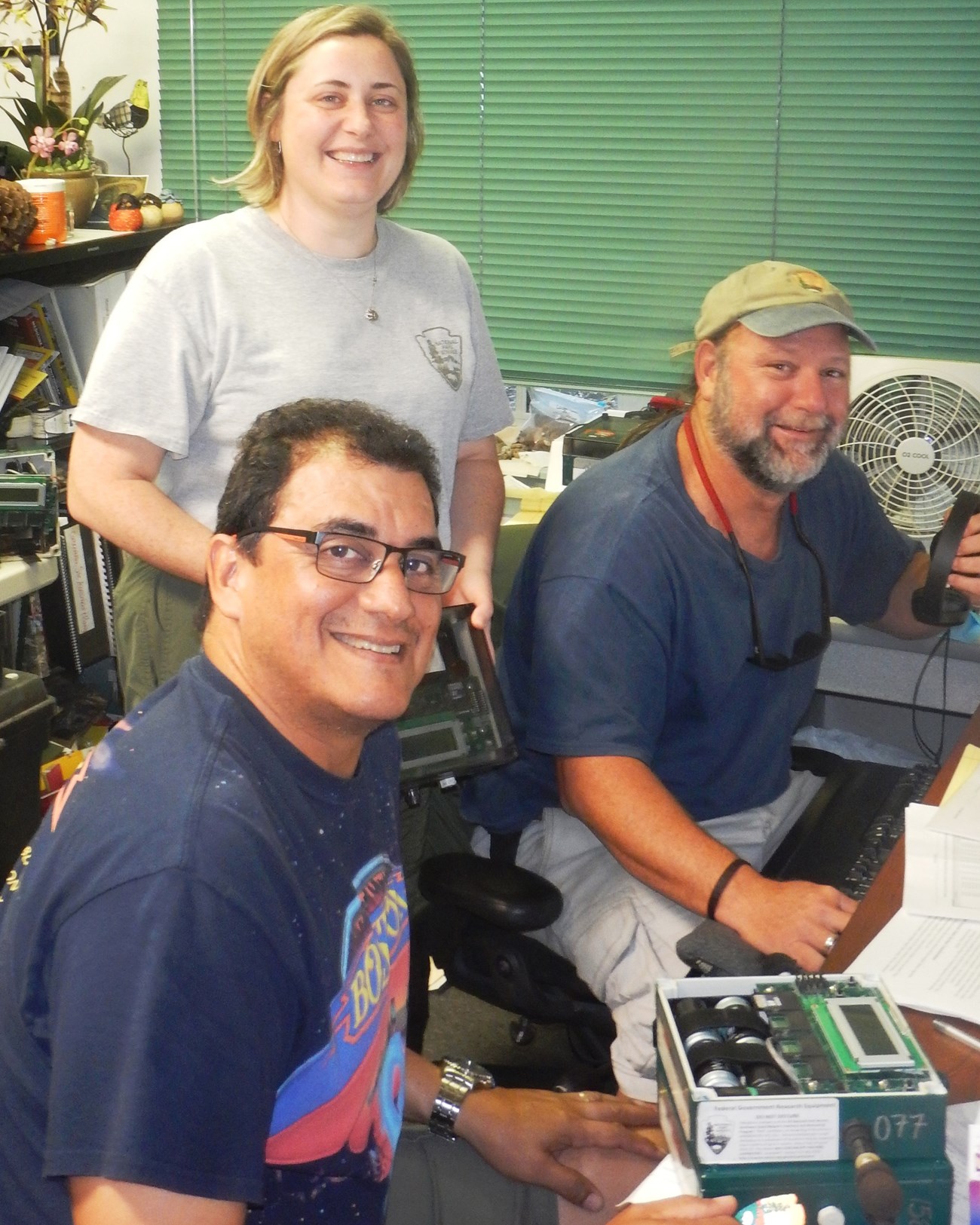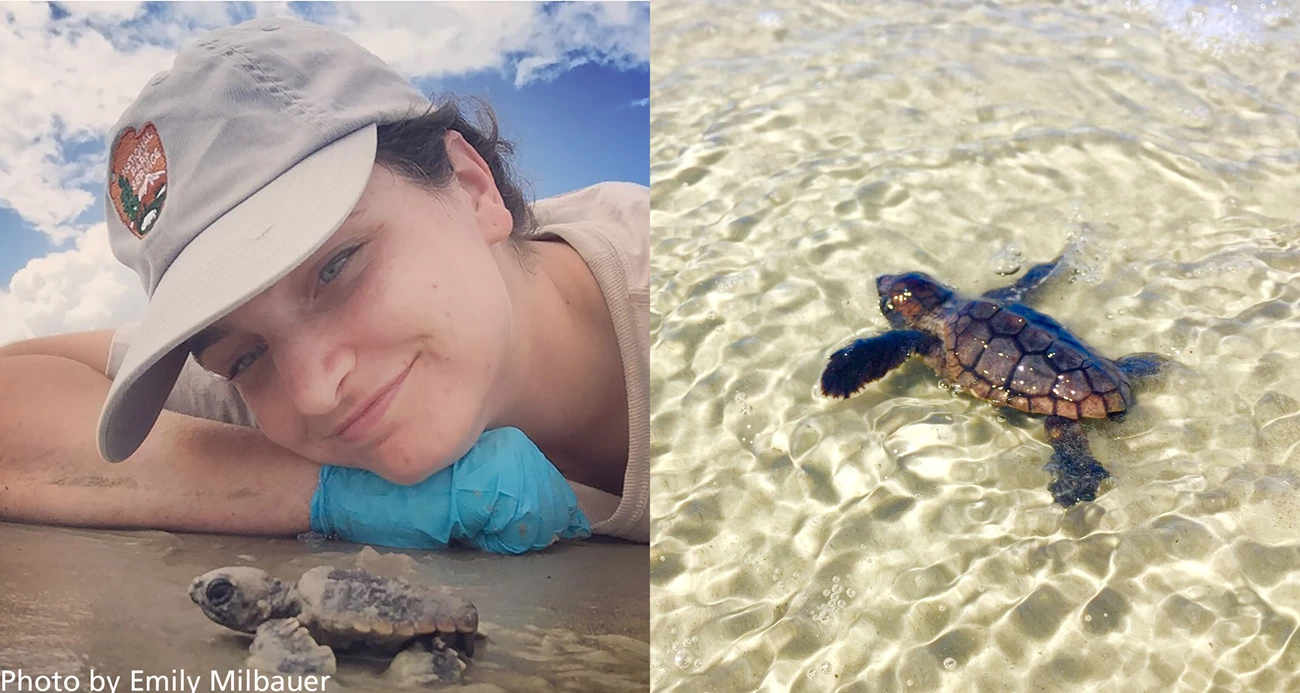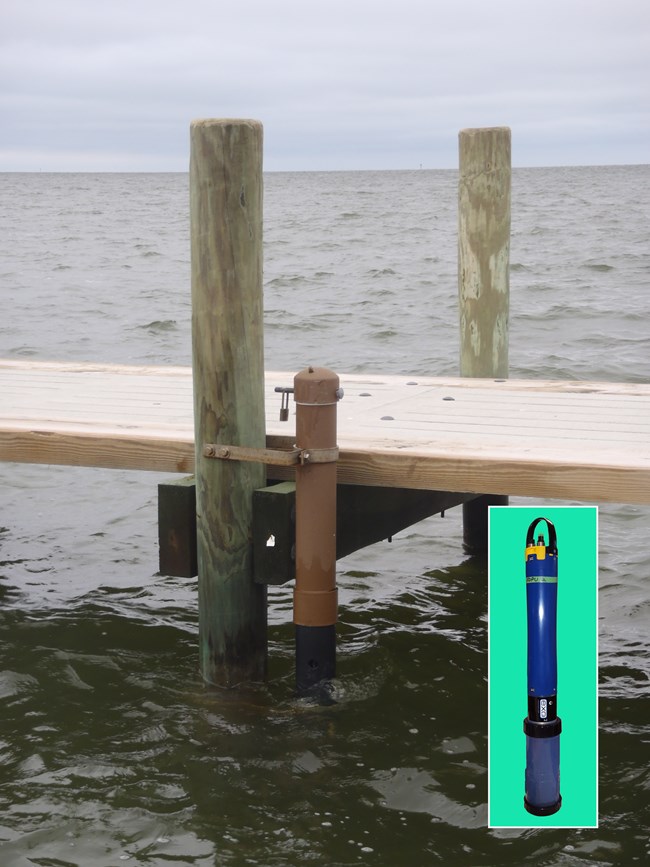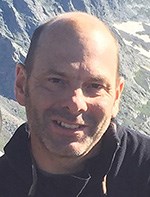Last updated: May 18, 2023
Article
Southeast Coast Network News September 2016

NPS photo / SECN staff
Newsworthy Stuff
- Dela attended the ACM conference on Knowledge Discovery and Data Mining (KDD) in San Francisco, California last month. KDD is a premier interdisciplinary conference bringing together researchers and practitioners from data science, data mining, knowledge discovery, large-scale data analytics, and big data.
- Briana and Emily pitched in at the Annual Ocmulgee National Monument Butterfly Bioblitz on 19–20 August. They conducted butterfly surveys, led and educated school groups, and assisted with check-in for the event. An event highlight: Briana found a new species to add to the OCMU park butterfly species list—the Dion skipper! (A big thanks to Marc Minno for confirming the ID.)
- Wadeable and non-wadeable stream channel monitoring has been implemented at the first park. This field work at Horseshoe Bend National Military Park included a videographic survey of the Tallapoosa River, a detailed survey of a wadeable stream reach, and an area of special interest survey. Results of this monitoring effort will be available in the coming months.
- Briana spent a week in St. Mary’s with Kevin Whelan, ecologist, and Rob Muxo, biological technician, both of the South Florida Caribbean Network. South Florida/ Carribean Network is considering implementing a monitoring approach similar to that of the Southeast Coast Network anuran community monitoring protocol, and the group discussed SOPs associated with this protocol, maintainance and programming of ARDs, and using SongScope in data extraction and analysis. The collaboration was a successful one, and Briana left with ideas of how to improve the methodology currently in use.
Field Work
Completed in July/August
- Salt marsh data was collected at Cape Hatteras National Seashore, Cape Lookout National Seashore, Fort Pulaski National Monument and at one site in Timucuan Ecological and Historic Preserve.
- Automated Recording Devices (ARDs) have been collected at Fort Sumter National Monument and Cumberland Island National Seashore.
- Vegetation community monitoring was completed at Cape Lookout National Seashore.
Upcoming in September
- Fixed-station data will be collected at Georgia and Florida parks 13–15 September.
- Wetland water level data will be collected at Cumberland Island National Seashore 14–16 September.
- Fall shoreline monitoring will be performed at Canaveral National Seashore, Fort Matanzas National Monument, Timucuan Ecological and Historic Preserve, and Cumberland Island National Seashore 23–30 September.

NPS photos / SECN staff
From the editor
The editing department is plugging away at our backlog of data summaries and reports. Landbird data summary reports and resource briefs have been updated on IRMA. The last four landbird reports for 2014 (Fort Frederica National Monument, Congaree National Park, Canaveral National Seashore and Moores Creek National Battlefield) will be published later this month.
- Landbird community monitoring at Ocmulgee National Monument: 2014 data summary.
- Landbird community monitoring at Kennesaw Mountain National Battlefield Park: 2012 data summary.
- Landbird community monitoring at Ocmulgee National Monument: 2011 data summary.
- Landbird community monitoring at Fort Sumter National Monument: 2012 data summary.
- Landbird community monitoring at Horseshoe Bend National Military Park: 2012 data summary.
- Landbird community monitoring at Cape Lookout National Seashore: 2012 data summary.
- Landbird community monitoring at Chattahoochee River National Recreation Area: 2011 data summary.
- Landbird community monitoring at Horseshoe Bend National Military Park: 2011 data summary.
- Landbird community monitoring at Cumberland Island National Seashore: 2012 data summary.

NPS photo
What does THAT do?
The sonde guard is mounted to a dock (pictured at right at Cape Hatteras NS) and protects the sonde. The sonde EX02 stays in the water and collects continuous water-quality data in 15 to 30 minute intervals. It gathers information on temperature, turbidity, dissolved oxygen, salinity, water levels, pH, and in some parks, chlorophyll a.

From the Program Manager
As the 2016 summer field season begins to wind down, I want to give everyone a quick, big-picture update to the SECN’s fall focus areas. First, attention will begin to turn towards data entry and processing for our terrestrial data sets (vegetation, landbird, and anuran). Water and coastal monitoring will continue year round, and you will continue to see Lisa, Jason, and Pete into late fall. As we continue to catch up on reports and reduce the time between data collection and reporting, our editing staff will be pushing to get documents already in house published and into IRMA, as well as catch up on data summaries and briefs for all of the parks. Finally, this fall will be the time for all of us to meet in person. I will be attending the National Program Managers meeting in October and will report back to all that attend the steering committee and board meeting scheduled for November. This will be an excellent opportunity to discuss our findings and strategize a plan for future years’ monitoring work. I hope to see all of our steering committee and board members at the meeting. Until then, I hope to see you in your park soon.
Tags
- knowledge discovery and data mining
- ocmulgee national monument
- horseshoe bend national military park
- south florida/caribbean network inventory and monitoring office
- anuran community monitoring protocol
- automated recording devices
- vegetation community monitoring
- landbird community monitoring
- kennesaw mountain national battlefield park
- fort sumter national monument
- chattahoochee river national recreation area
- cape lookout national seashore
- cumberland island national seashore
- data sonde
- data sonde guard
- exo2
- southeast coast network news
